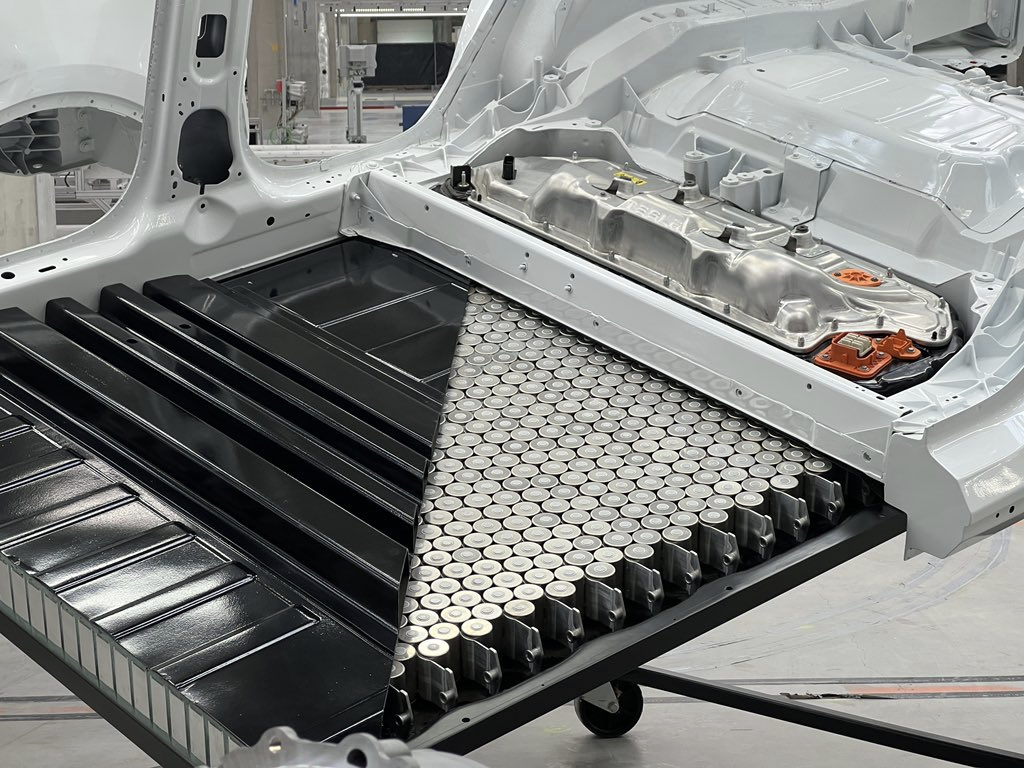In the 2020 global automotive brand annual sales ranking, Toyota ranked first with 9.528 million vehicles sold, while Volkswagen ranked second with 9.305 million vehicles sold. According to Tesla’s expectations, by 2030, the global electric vehicle market will reach 30 million vehicles, and Tesla’s annual delivery volume will reach 20 million vehicles, accounting for two-thirds of the global electric vehicle market.
No company in the history of the automotive industry has ever achieved an annual sales volume of 20 million vehicles.
Speaking of Tesla’s unique skill, Musk said that in the future, all manufacturers can make long-life electric vehicles and autonomous driving vehicles, which are not unique to Tesla. The real unbeatable advantage of Tesla is its strong engineering capabilities.
This ability was once again demonstrated at the Berlin factory showcase, which Tesla opened yesterday.
Model Y of the 2.0 era
The Berlin factory is Tesla’s second overseas factory after the Shanghai factory. Its construction started just over a year later than the Shanghai factory, but it has taken a big step forward in advanced manufacturing compared to the Shanghai factory.
One of the changes can be seen from the Model Y showcased at the Berlin factory.
4680: The third-generation cylindrical battery cell
The Model Y manufactured at the Berlin factory will use the 4680 battery cell, which was released on Battery Day last year and is Tesla’s third-generation cylindrical battery cell after the 1865 and 2170.
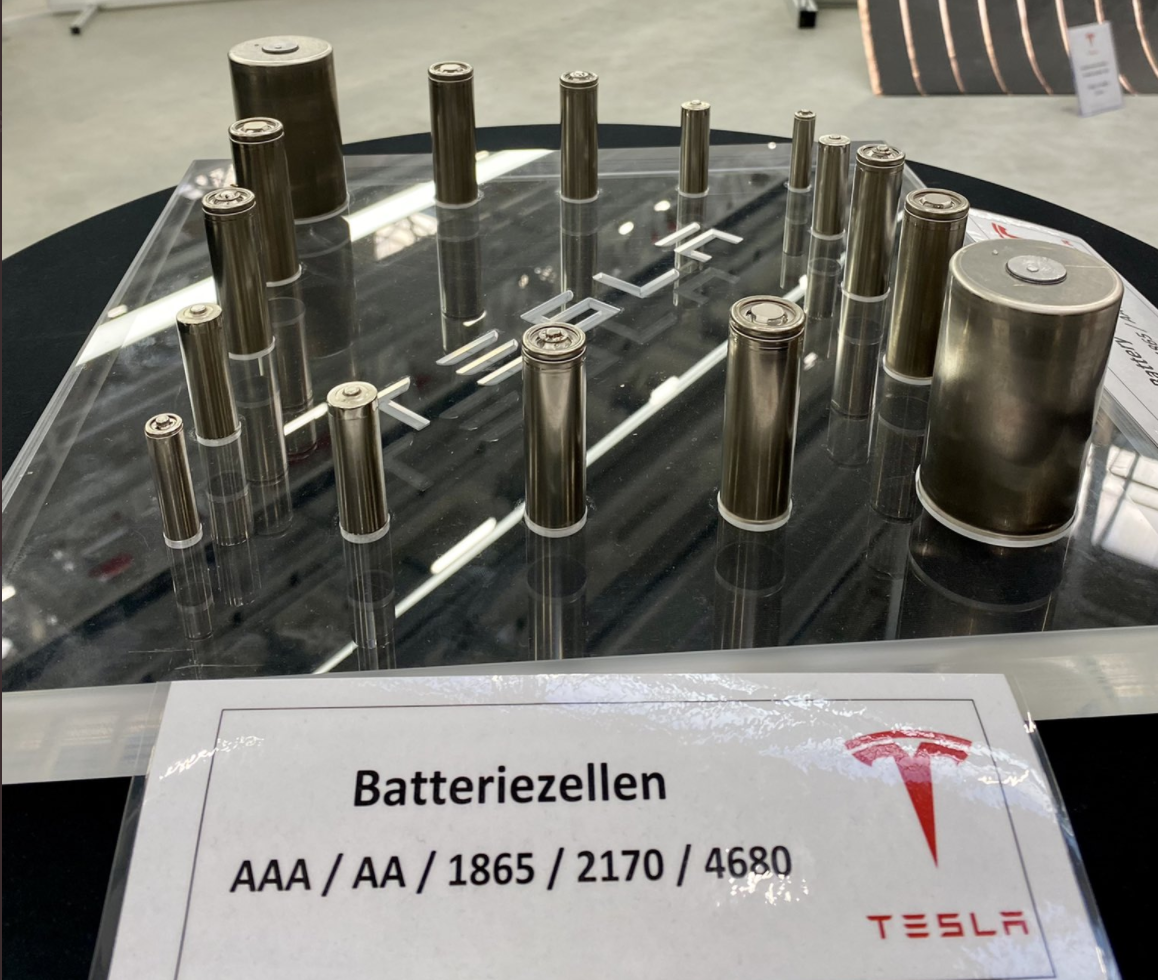
The diameter of the 4680 battery cell is 46mm and the height is 80mm. The size can be intuitively observed from the comparison in the above picture. Tesla’s explanation for the diameter is as follows:
- The larger the diameter of the cylindrical battery cell, the less battery casing material is used in the manufacture of batteries of the same capacity, and the lower the manufacturing cost.
- There is a parabolic relationship between the increase in the diameter of the cylindrical battery cell and the gain in endurance.
- Combining the above two, Tesla chose the diameter of 46mm, which represents the longest endurance.
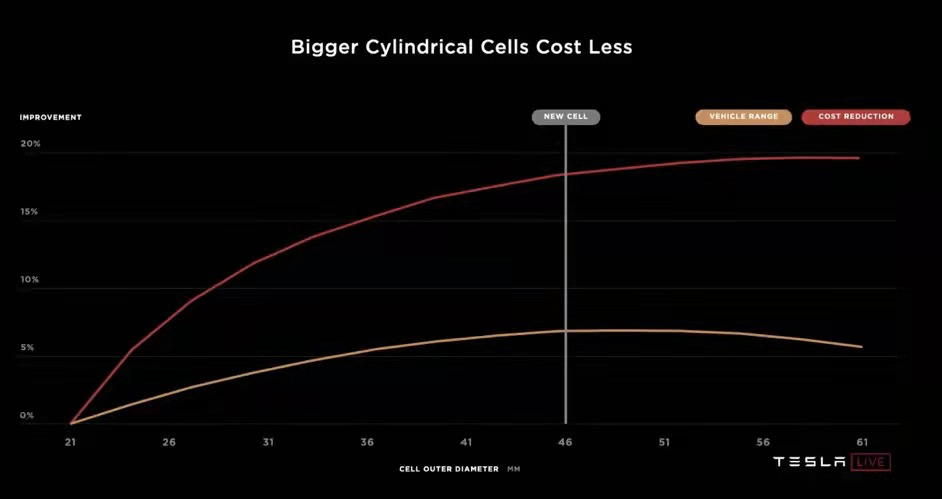
Finally, the capacity of the 4680 battery cell increased by five times compared with the 2170, and the output power increased by six times, bringing a 16% increase in endurance to the vehicle.
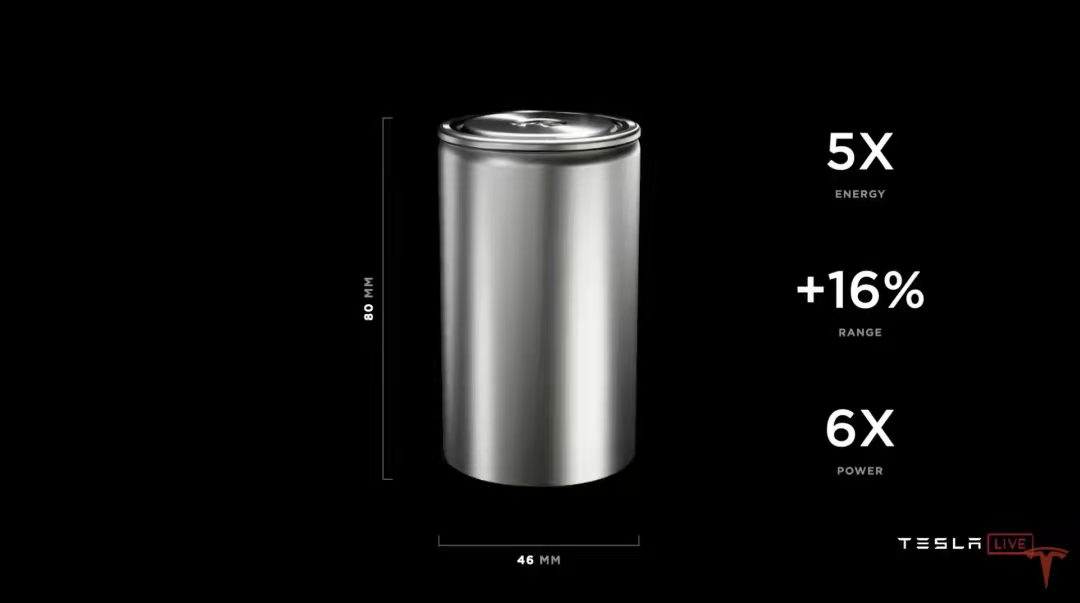
The increase in the volume of a single cylindrical battery cell will bring not only the above-mentioned cost and endurance advantages, but also a negative effect–the heat dissipation area per unit volume of the battery cell will be reduced.One of the obvious manifestations of this negative effect is that it causes the battery to become overheated, which in turn affects the charging speed of the vehicle. To solve this problem, in addition to the increase in size, the 4680 battery cell uses another key technology – the full tab electrode.
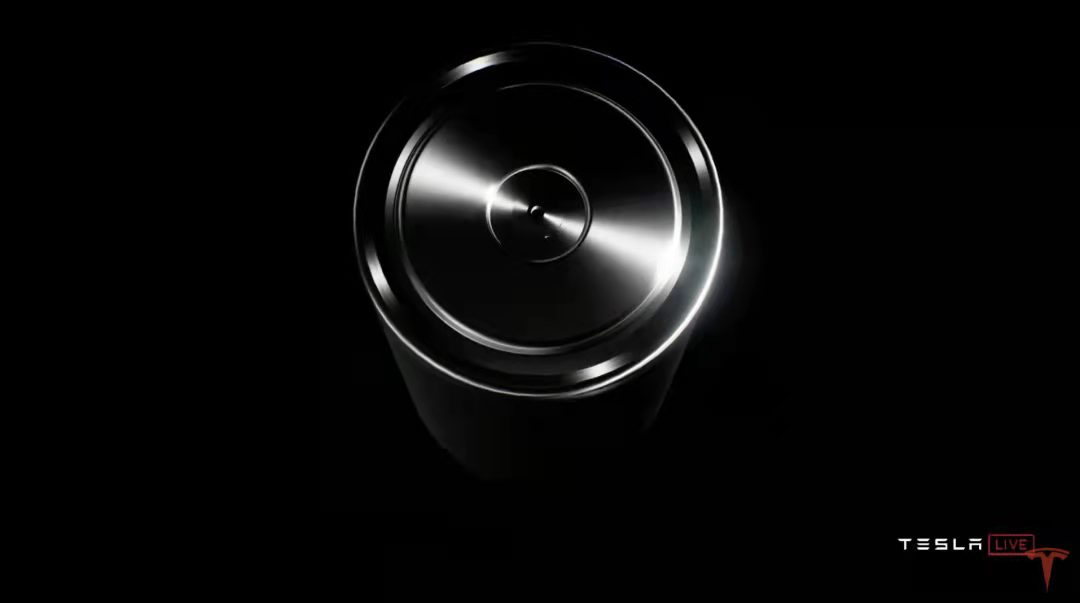
This change expands the small cylinder protruding from the positive electrode of the original cylindrical battery cell to the entire positive electrode, increasing the conductive area of the battery cell in the power-on state, effectively reducing the internal resistance of the individual battery cell, reducing the heat generation in the conductive state, and further reducing the charging overheating problem caused by the increase in battery cell diameter.
The final effect is obvious. The 4680 battery cell with the full tab solution has almost the same charging speed as the 2170 battery cell, with minimal loss.
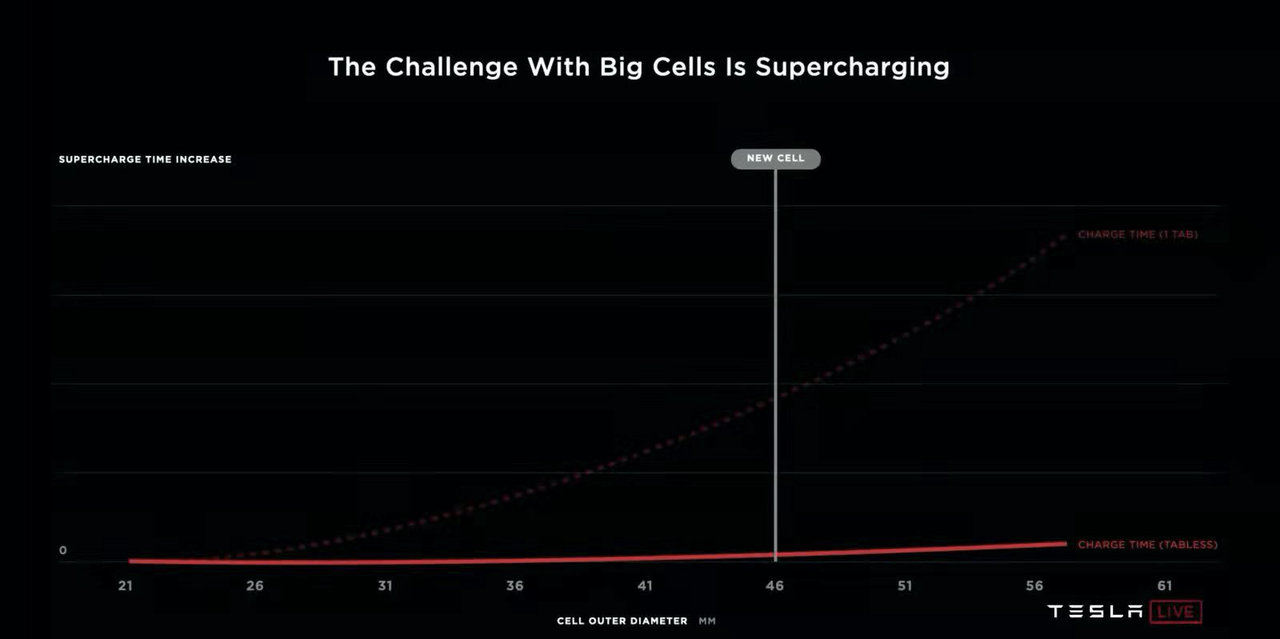
The new battery cell is the first step for Model Y in the 2.0 era. At the same time, Tesla’s Model Y produced in the Berlin factory also uses a brand-new integrated chassis battery pack.
Battery pack is chassis
“There is no need to put another box in the box” is Musk’s idea when talking about the integrated chassis battery pack. He said that this inspiration came from the aircraft fuel tank.
Early airplanes had a fuel tank in the wings, just like electric vehicles now put a battery pack on the chassis. This design does not use space to the fullest. Later, the design of the fuel tank was integrated into the wings directly, and the wings became the fuel tank.
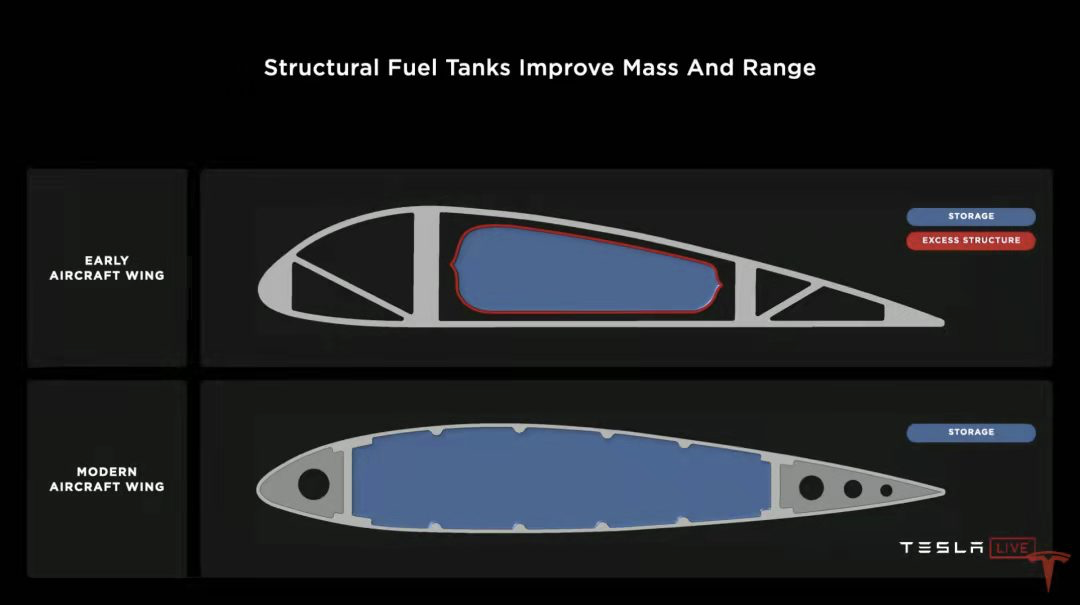
So Tesla implemented this idea on the battery pack. The chassis is the battery pack, making the chassis a part that can accommodate the battery.
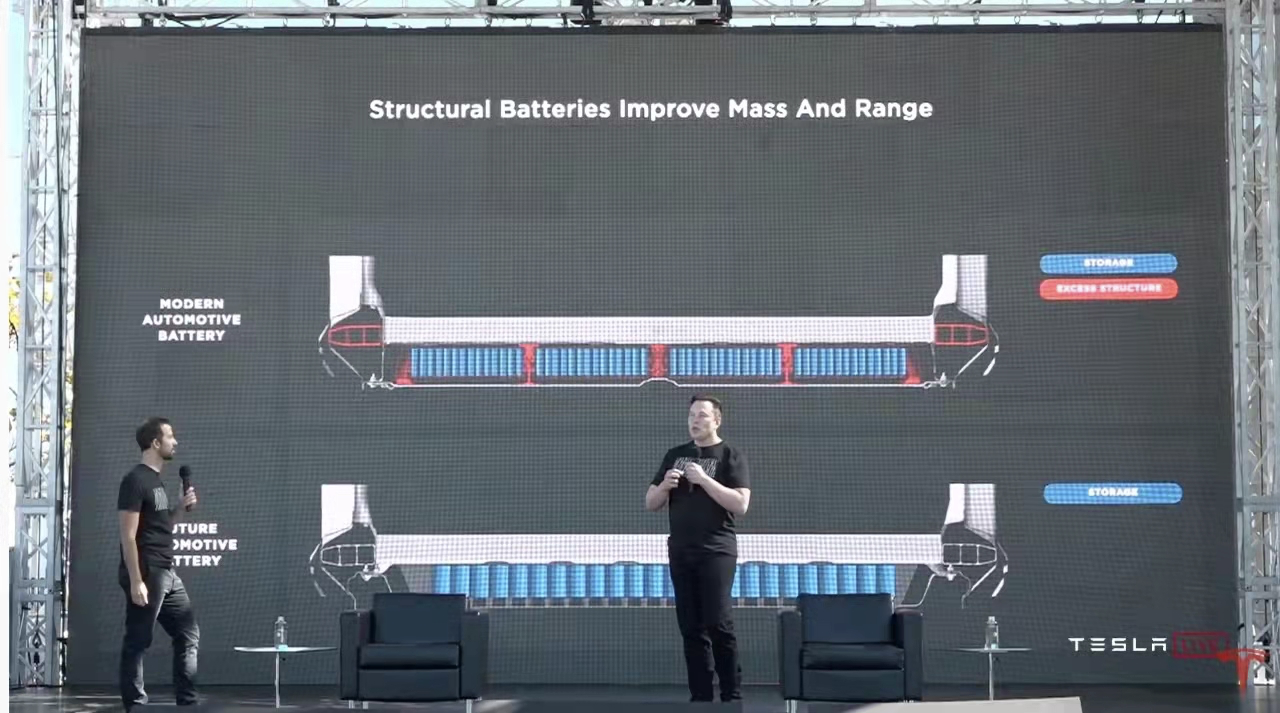
The Berlin factory demonstrated for the first time the one-piece chassis battery pack on the Model Y. The brand-new battery pack no longer has battery modules, but is directly covered with 4680 battery cells, greatly reducing the middleware in the battery pack and improving the volume utilization rate of the battery pack.
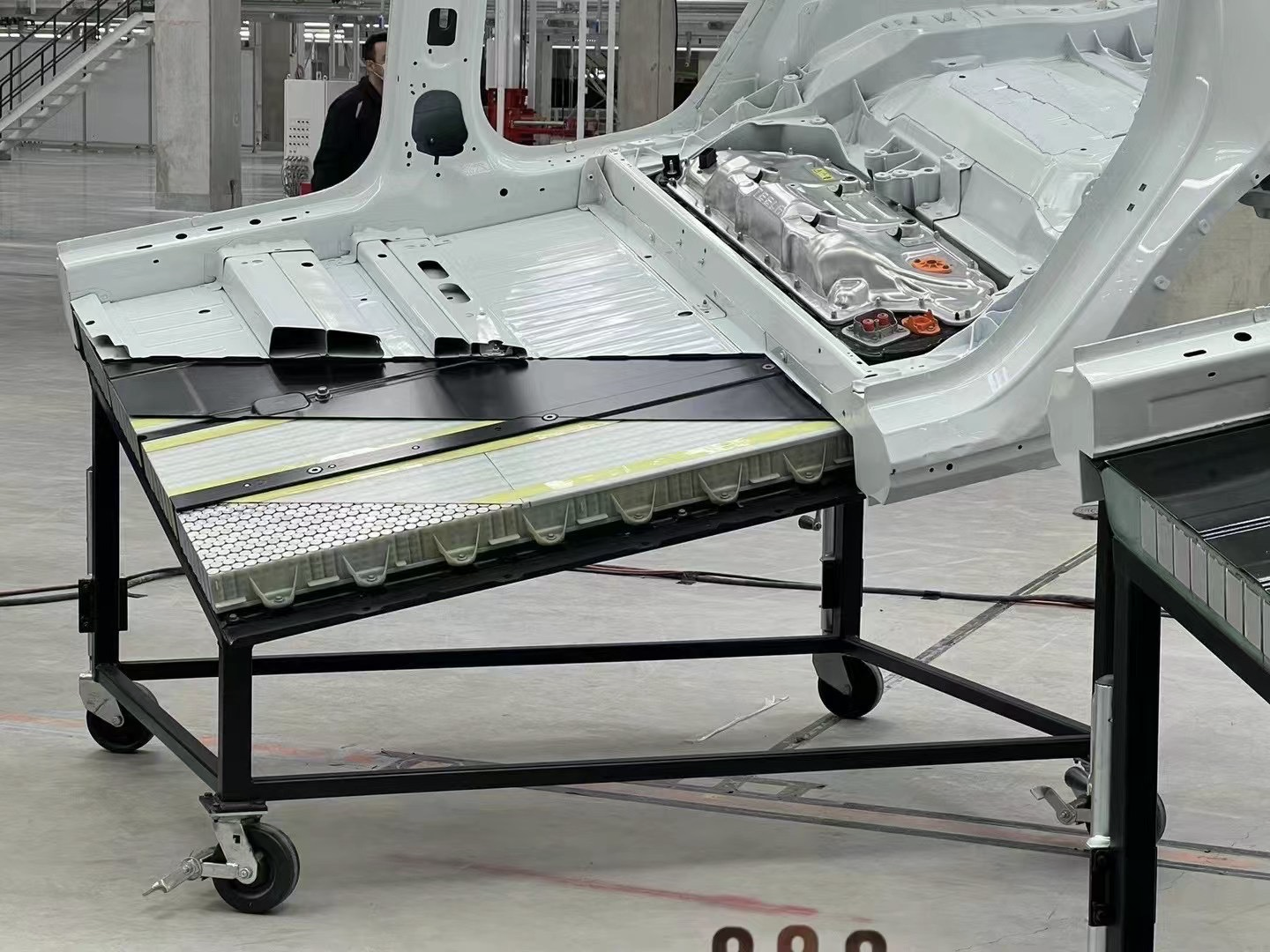
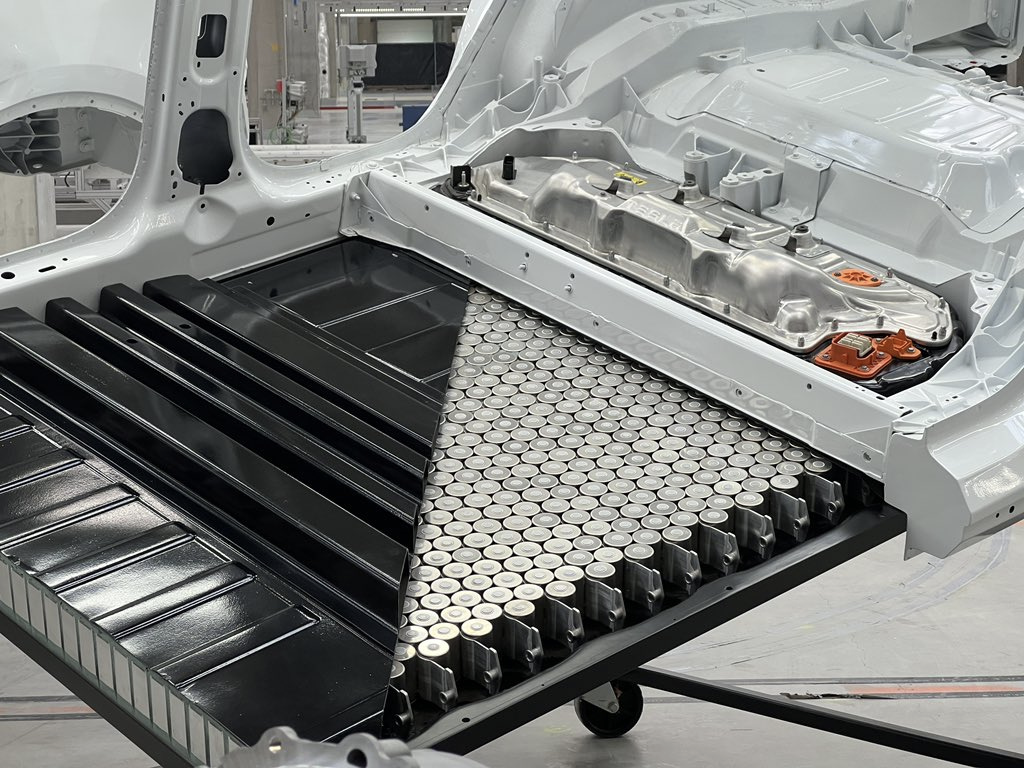 The new battery system on display uses liquid-cooled heat dissipation plates that are in contact with the cell laterally, with one plate located horizontally for every two rows of cells. This design is similar to that of the 2170 battery system, but the 2170 battery pack has four rectangular large modules arranged vertically, so the cooling plates are arranged vertically in the modules.
The new battery system on display uses liquid-cooled heat dissipation plates that are in contact with the cell laterally, with one plate located horizontally for every two rows of cells. This design is similar to that of the 2170 battery system, but the 2170 battery pack has four rectangular large modules arranged vertically, so the cooling plates are arranged vertically in the modules.
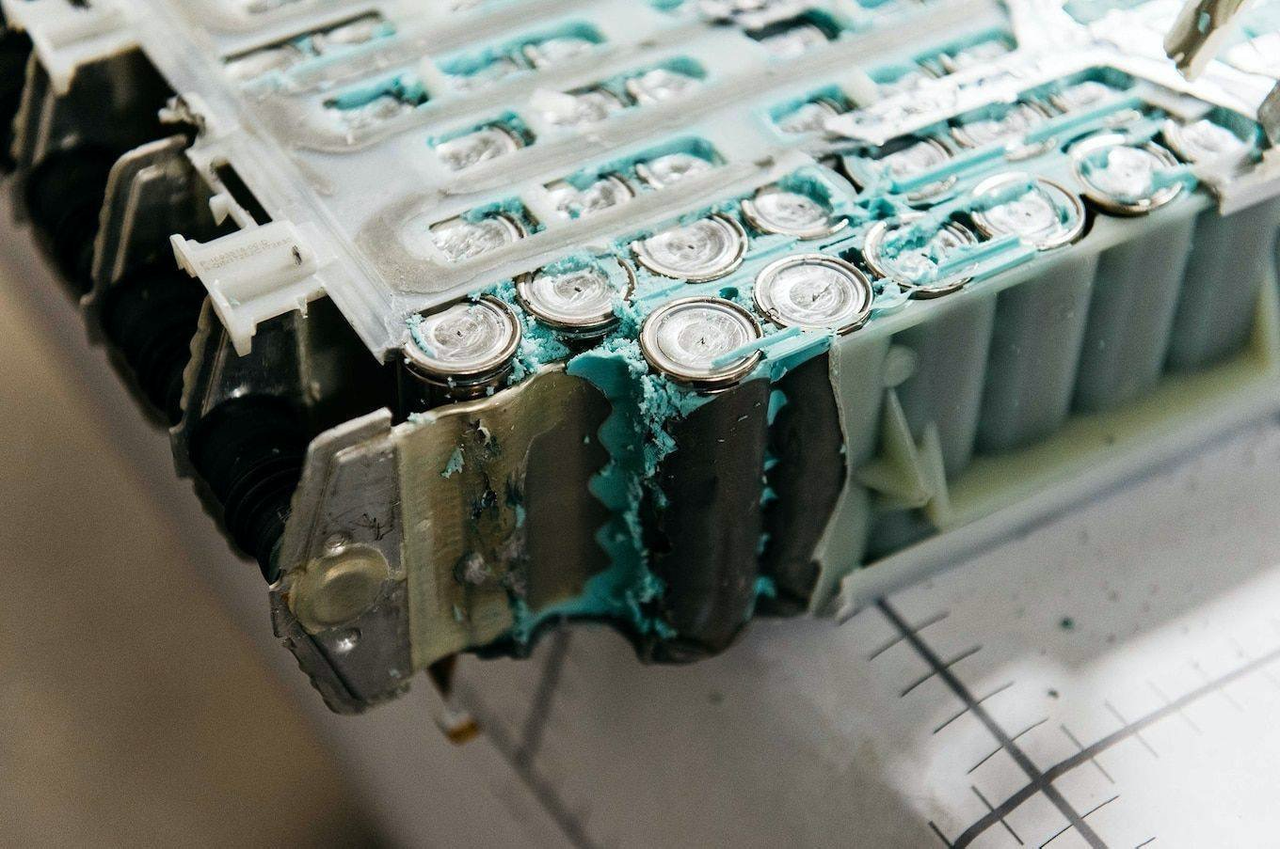
It is not difficult to see that the integrated battery pack leaves more space on both sides. This design is mainly to leave space for lateral compression in extreme cases of side collisions, and horizontally arranging the liquid cooling plates can also allow the centralized cooling water channels to be arranged in these spaces on both sides, saving the space that would otherwise be occupied by the water channels arranged longitudinally at both ends of the battery pack.
In addition, the 4680 cells and battery system that adopt the all-terminal scheme no longer use aluminum wire welding like the 2170 cells. Instead, metal sheets are directly connected to the cell terminals, with a larger contact area, and theoretically better consistency in manufacturing.
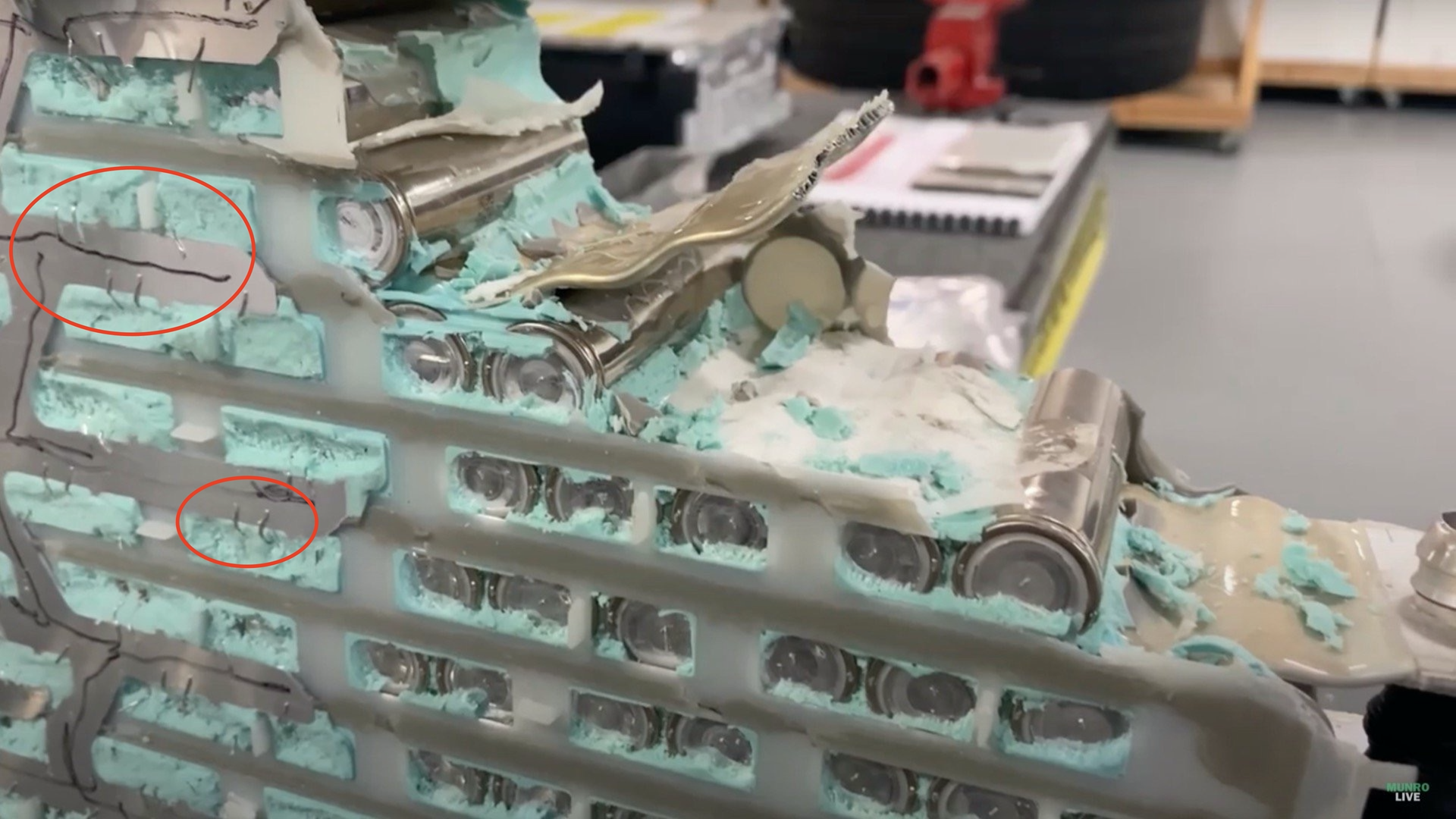
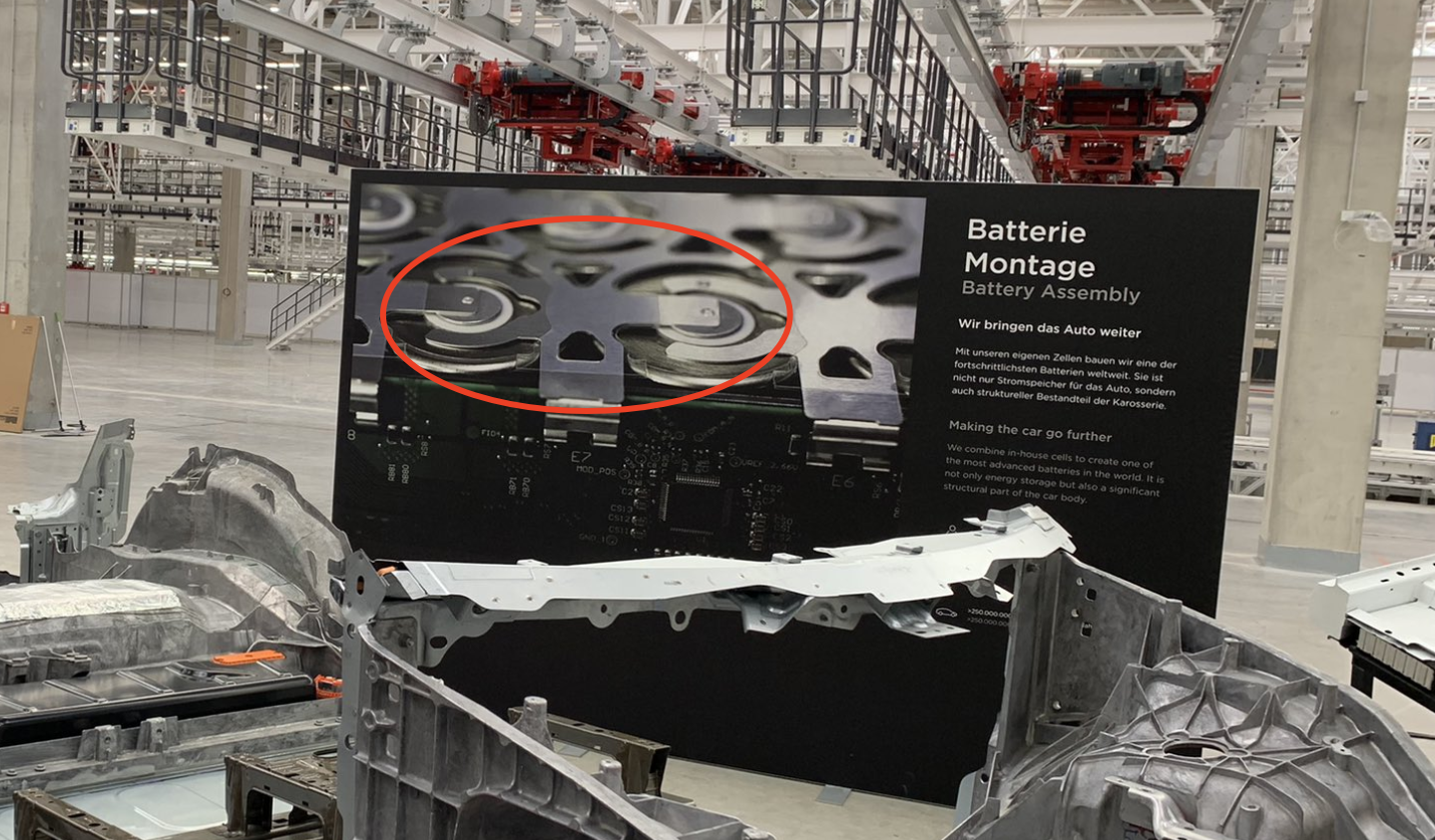
After the new integrated battery pack becomes a structural component of the chassis, it also connects the front and rear body, forming Tesla’s new “three-in-one” chassis.
Integrated Casting of Front and Rear
The Model Y produced in Berlin uses integrated casting for both the front and rear of the vehicle. This type of cast body has better mechanical properties than assemblies made with stamping parts, and has advantages in terms of weight reduction and production efficiency.
This is what the cast body of the Model Y looks like:
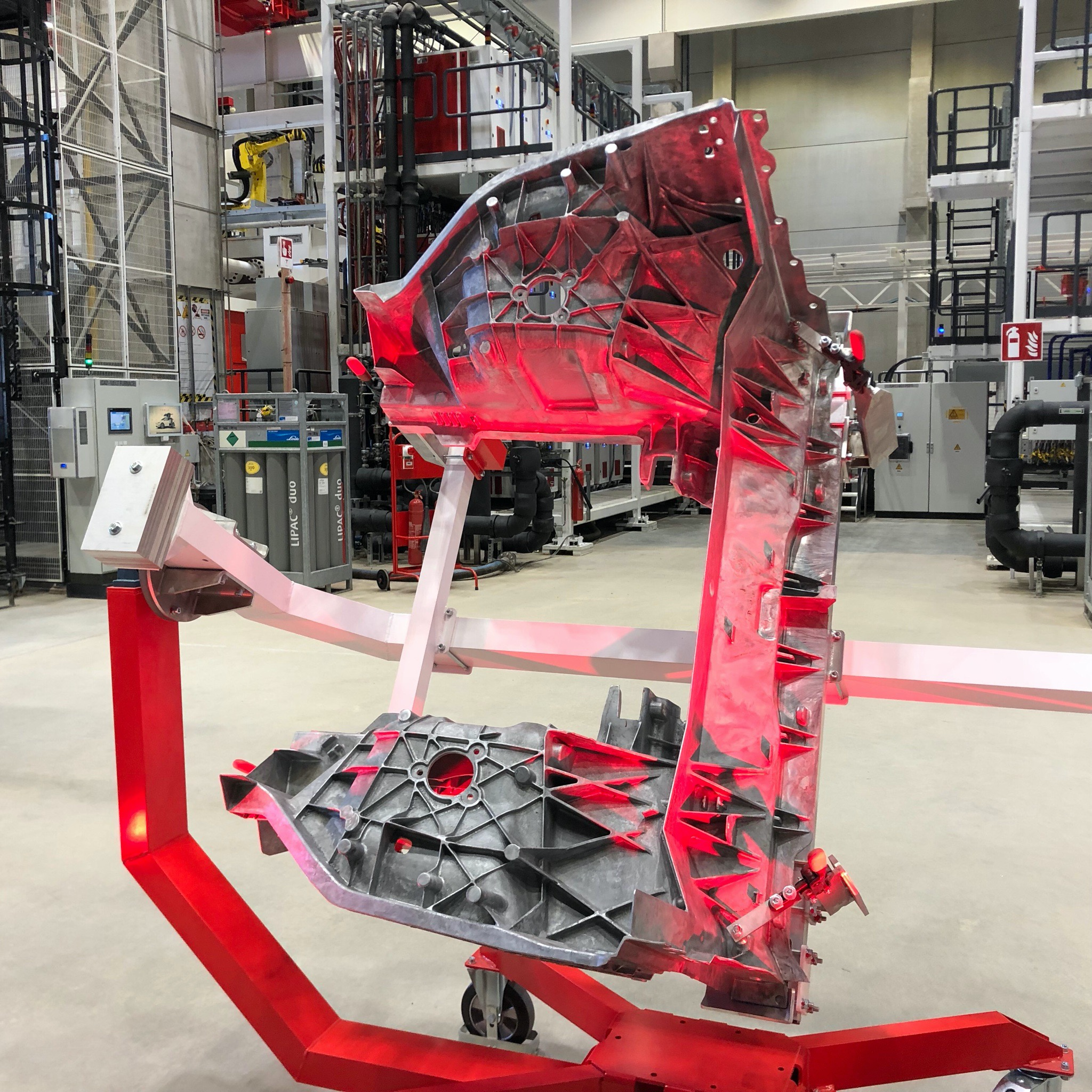
After the body is assembled, it looks like this:
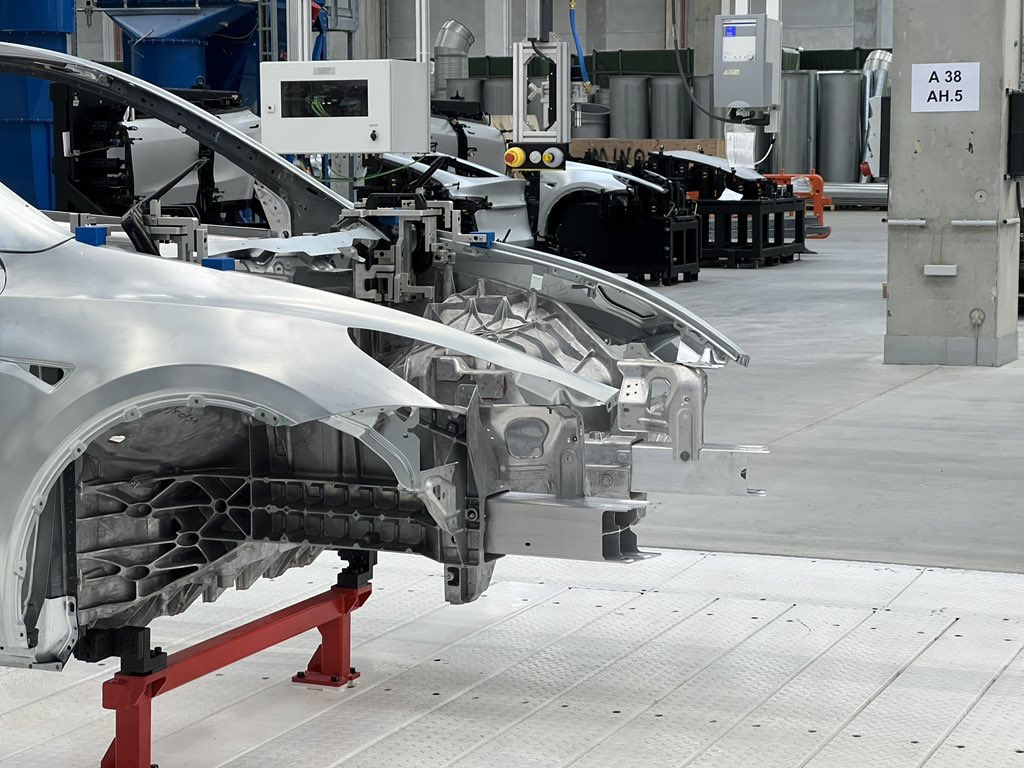
After the integrated battery pack is installed with the cover, it looks like this:
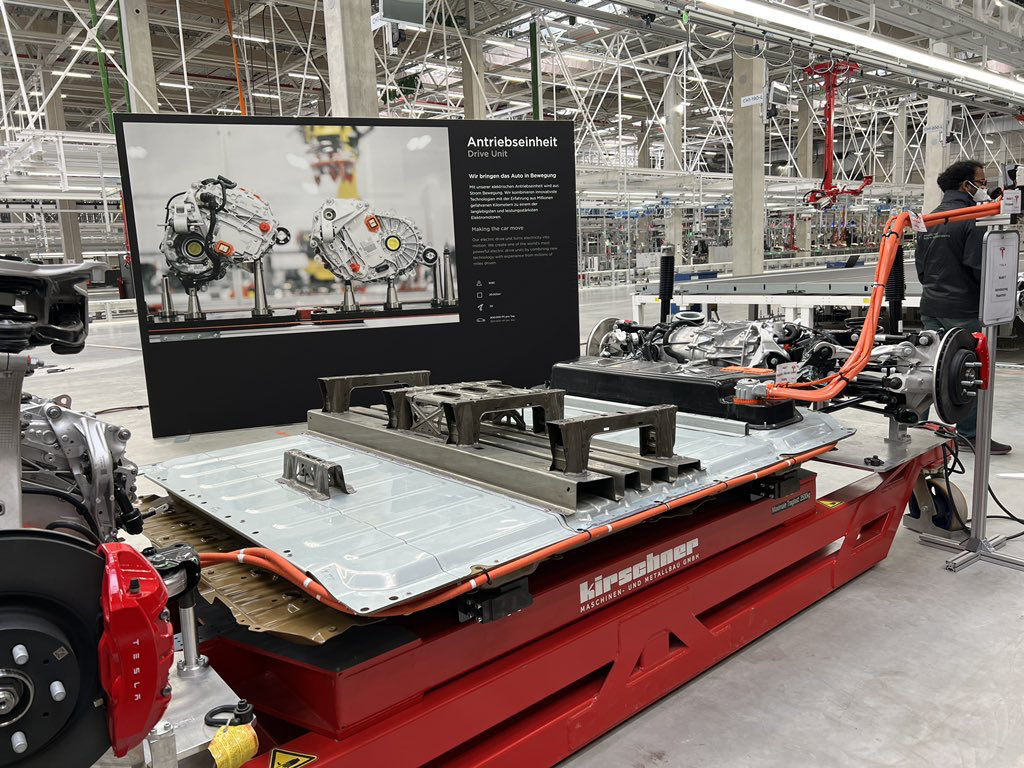
After the front and rear integrated cast body and battery pack are combined, it becomes what is shown in the following image: A unprecedented, load-bearing vehicle body designed entirely for electric vehicles.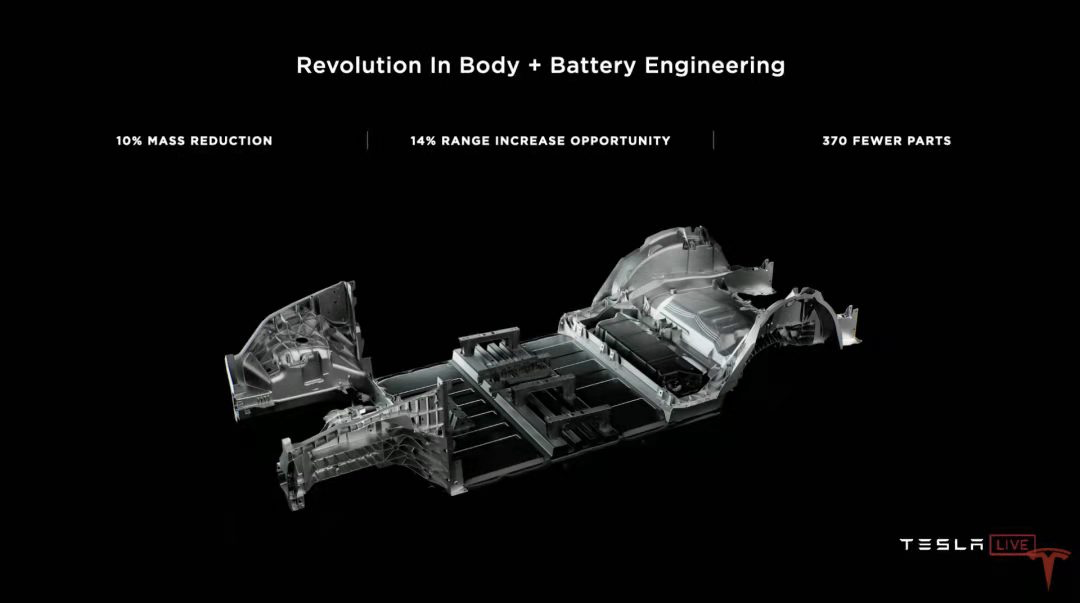
The new structure has a high structural strength and rigidity. “Musk said that using this type of structure for a convertible could provide better rigidity than a non-convertible hardtop car,” and after the battery is arranged more centrally, it also reduces the vehicle’s rotational inertia, making it more conducive to handling and steering response.
The combination of the three factors achieves a 10\% reduction in weight, a 14\% potential increase in mileage, and a very rare point — a reduction of 370 body parts.
After the significant reduction of parts, the corresponding production manufacturing process for the vehicle is also significantly reduced, such as the originally 70 parts for the rear body becoming a one-piece die-casting piece, reducing to only two parts. The production line that was originally used for the assembly of the rear body was simplified to just one press machine. For this simplification, the factory could use more than 300 industrial robots less.
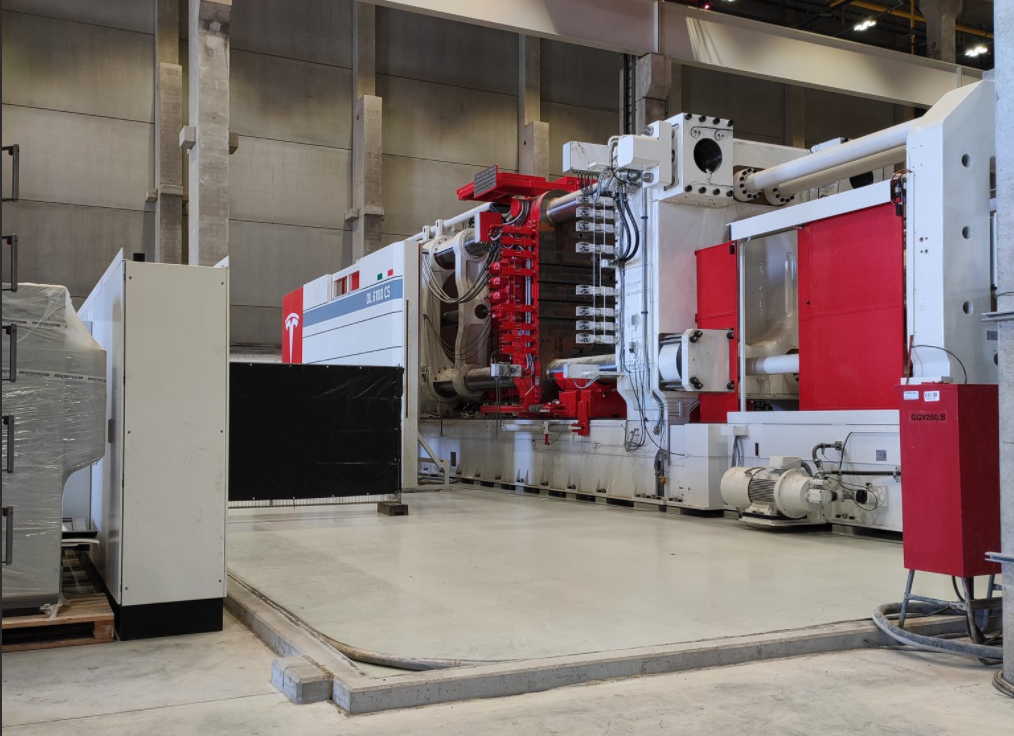
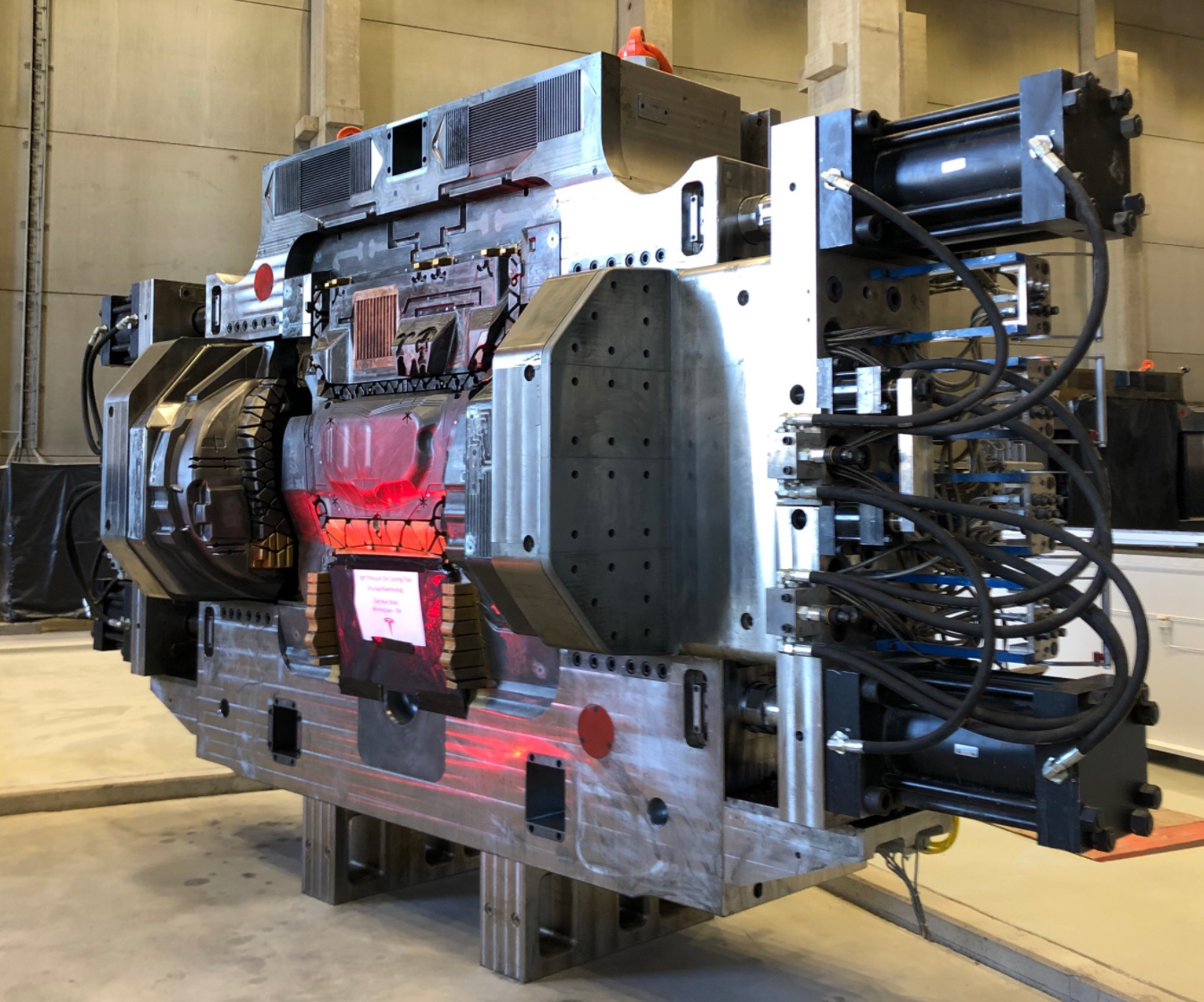
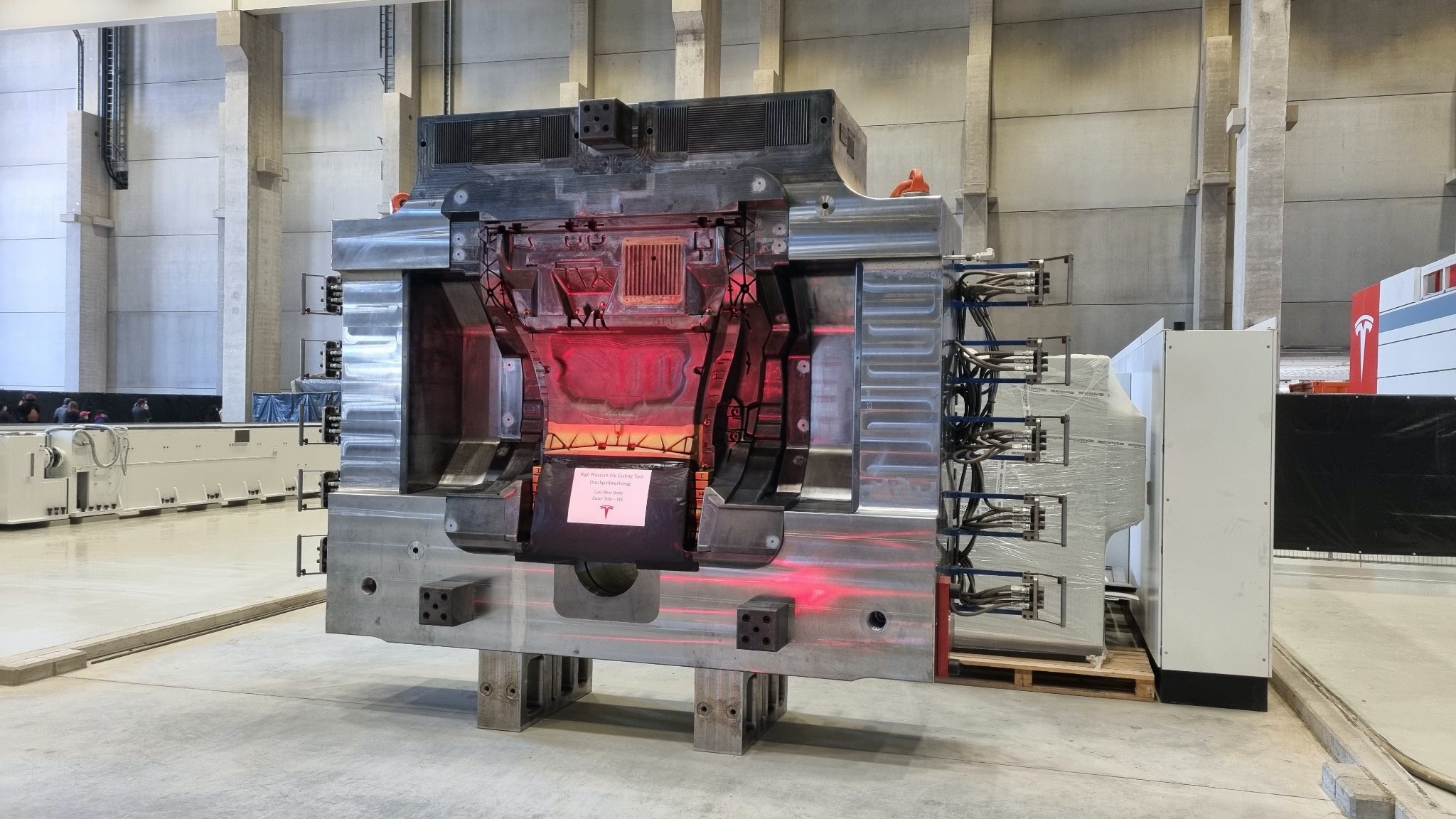
The die-casting technology used by Tesla has an advantage in the manufacturing process: the integrally formed body after die-casting does not require secondary heat treatment, which significantly improves efficiency.
However, it should be noted that the integrally formed die-cast manufacturing currently used by Tesla still requires post-processing, and in fact, there are still many metal burrs on the integrally formed body that comes out of the die-casting machine. These metal burrs can be reduced by changing the process parameters but the company still needs fitters to grind them off manually.
The factory is also Tesla’s product
In the Berlin factory’s introduction, it takes only 45 seconds to produce one Model Y on average. According to this data, Tesla’s annual production capacity in the Berlin factory can reach 700,000 vehicles.
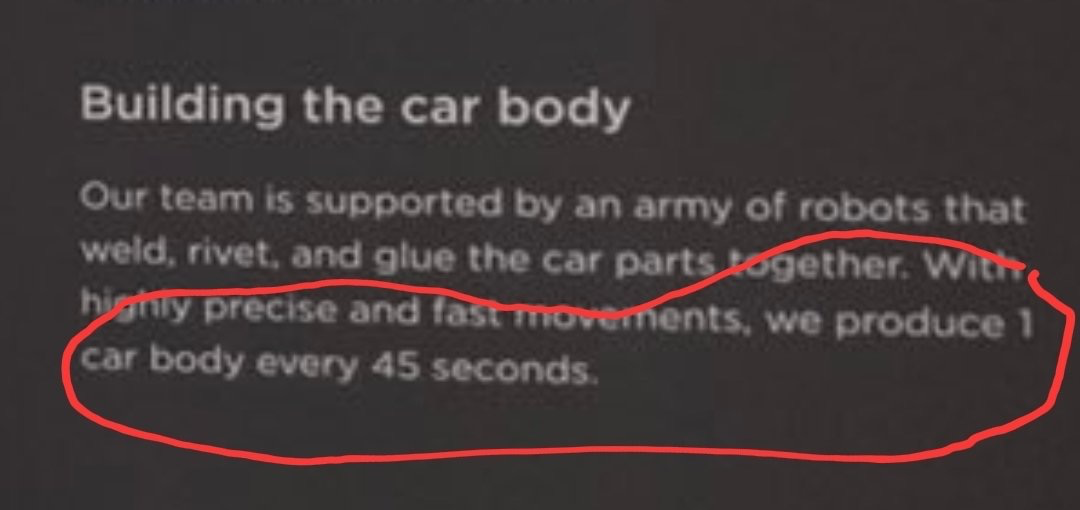
Perhaps feeling a bit nervous about the hype on the promotional page, Musk later added on Twitter that while producing one car in 45 seconds is achievable, the overall average speed is only about 75\% of this, but this 75\% speed can only be achieved by the Berlin factory’s “007” working three shifts per day and producing 7 days a week.
At this rate, Berlin factory’s annual capacity is expected to reach around 500,000 vehicles, with a monthly output of 42,000, which should be achievable in one to two years.
This number seems to be similar to that of the Shanghai plant, but beyond capacity, what needs to be seen is that the way of making cars at the Berlin factory has been iterated. These unprecedented new battery systems and all-new bodies are a reflection of Tesla’s cutting-edge position in the automotive industry.
It takes a long way to go from conceptualization to mass production of new designs. In the past two years, Musk has publicly stated more than once that “Prototype is easy, production is hard.” The implication behind this is that turning new technologies into mass producible ones requires more than just car manufacturing skills.
Therefore, Tesla not only manufactures cars and components, but also manufactures the machines for making them – factories.
In Musk’s words, “We made the machine that made the machine that made the machine.”
Tesla regards the factory as a product, and attaches great importance to the factory as a product, no less than electric vehicles. In innovations and improvements involving manufacturing equipment and processes, Tesla seeks to minimize outsourcing, design and manufacture equipment on its own, and vertically integrate at the factory level as much as possible.
During this process, Tesla is constantly challenging the limits of its engineering capabilities and exploring better paths. This is the “new car manufacturing” defined by technology companies.
In conclusion
The planned models for the Berlin factory currently only include Model Y, which, like Model 3, has been leading all competitors in core product strength for several years.
However, Tesla has not stopped improving it. The 1.5 version of Model Y with a brand new heat pump system and an integral die-cast body began mass production at the Fremont and Shanghai factories in the first quarter of this year. The 2.0 version of Model Y with an integral die-cast body and 4680 batteries will also be produced at the Berlin and Texas factories next year.
Although it is still called Model Y, for Tesla, the manufacturing efficiency of this car is continuously improving through iteration, and manufacturing costs are continuously decreasing through iteration. For consumers, the cost of purchasing Model Y will decrease during this process, while its product strength will continue to improve through iteration.
Therefore, you will feel that the already leading Model Y has not left too much room for competitors to catch up, and the driving force behind this process is precisely Tesla’s engineering capabilities mentioned by Musk.So now when you go back to the sentence where Musk talked about Tesla’s competitiveness, you will understand the meaning: in the long run, the true advantage is not to lead, but to run faster than others.
This article is a translation by ChatGPT of a Chinese report from 42HOW. If you have any questions about it, please email bd@42how.com.
